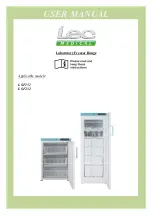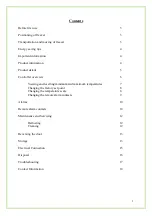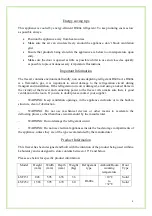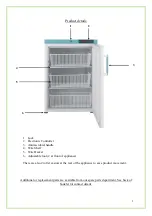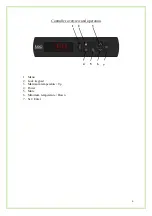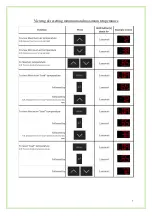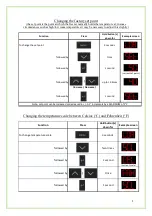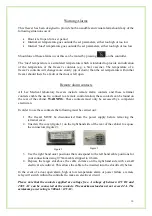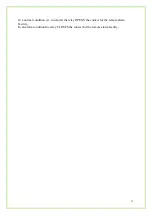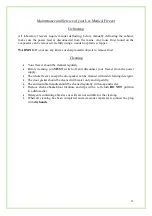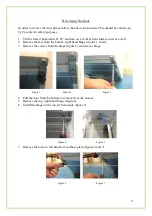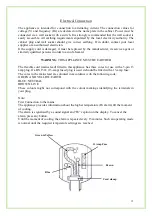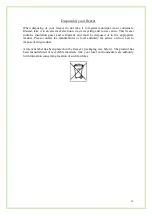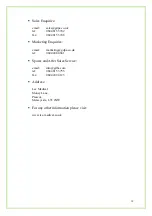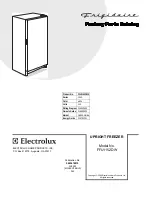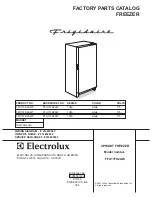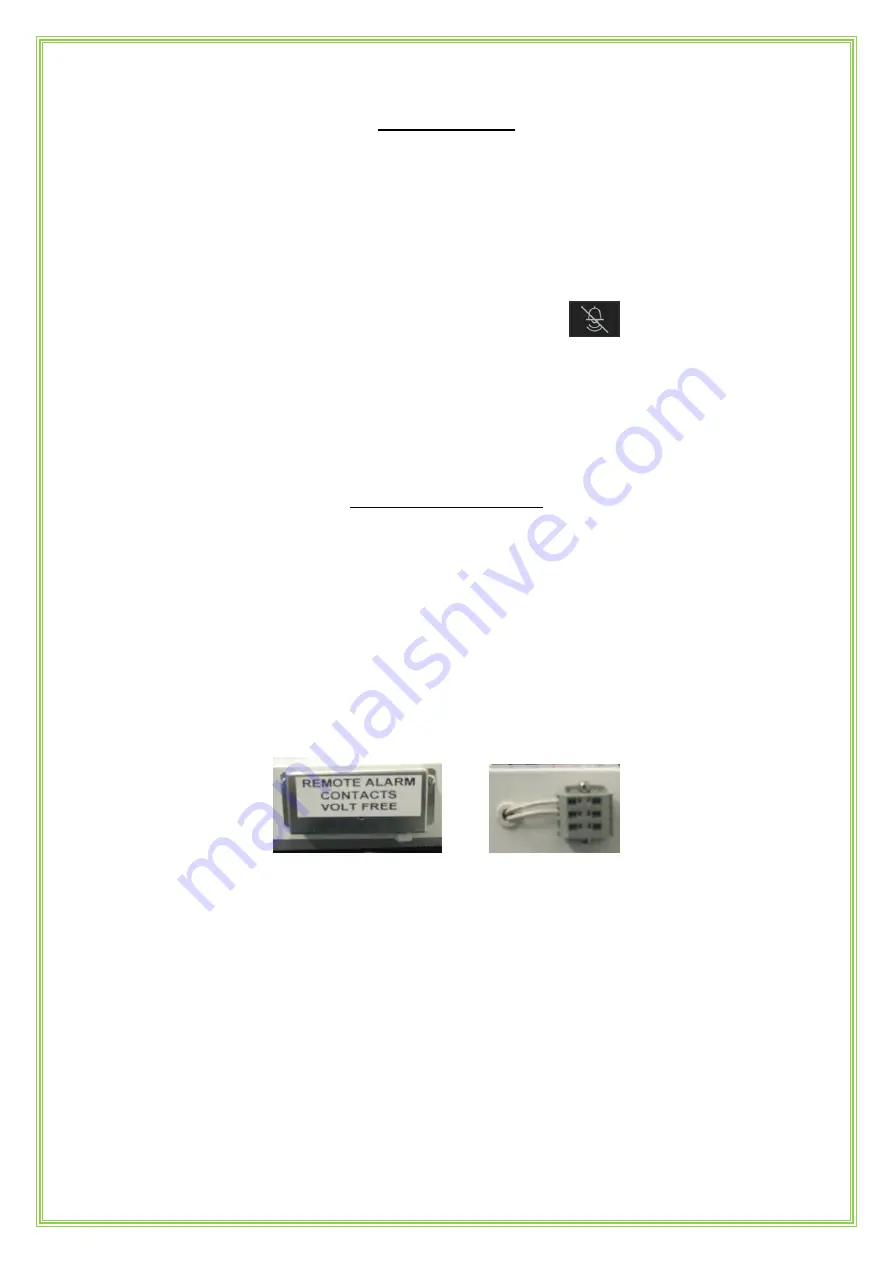
10
Warning Alarms
This freezer has been designed to provide both an audible and visual alarm should any of the
following situations occur:
Door is left open for a set period
Internal air temperature goes outside the set parameters, either too high or too low
Internal ‘load’ temperature goes outside the set parameters, either too high or too low
Should one of these alarms occur this can be muted by pressing
on the controller.
The ‘load’ temperature is a simulated temperature which is intended to provide an indication
of the temperature of the freezer’s contents (e.g. a 5ml vaccine). The temperature of a
freezer’s contents will change more slowly (up or down) than the air temperature within that
freezer should there be a fault or the door is left open.
Remote alarm contacts
All Lec Medical laboratory freezers include remote alarm contacts and these terminal
contacts enable the user to connect to a remote control station; these contacts can be found on
the rear of the cabinet.
WARNING
: These contacts must only be accessed by a competent
electrician.
In order to use these contacts the following must be carried out:
1. The freezer MUST be disconnected from the power supply before removing the
terminal cover.
2. Unscrew the cover (figure 1) on the right hand side of the rear of the cabinet to expose
the connectors (figure 2).
3. Use the right hand outer positions that correspond to the left hand cable positions for
your connections using 0.75mm cable stripped to 0.6mm.
4. Depress the larger slot above the cable entrance on the right hand side with a small
electrical screwdriver. This allows the cable to be inserted into the slot directly below.
In the event of a door open alarm, high or low temperature alarm or power failure a remote
relay will switch within the controller to make an electrical circuit.
Please note that the contacts supplied are voltage free. A voltage of between 12V DC and
230V AC can be connected at the contacts. The maximum load must not exceed 2A. The
minimum power rating is 500mA / 12V AC.
Figure 1
Figure 2

